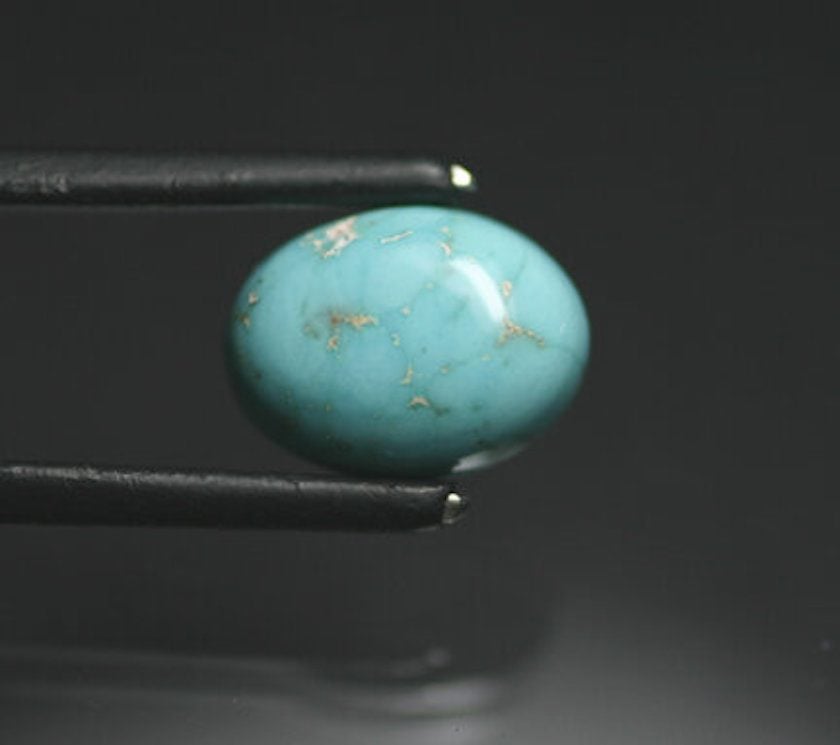Prosopite Value, Price, and Jewelry Information
Prosopite is usually a nondescript mineral with no gem significance. However, beautiful blue specimens are sometimes cut for jewelry.
1 Minute Read
Prosopite is usually a nondescript mineral with no gem significance. However, beautiful blue specimens are sometimes cut for jewelry.
Start an IGS Membership today
for full access to our price guide (updated monthly).Prosopite Value
Prosopites as Pseudomorphs
Prosopites may occur as pseudomorphs of topaz. This means the topaz forms first but then gradually changes chemical structure, becoming prosopite while retaining the external crystal form of the original topaz.
Do Prosopites Make Good Jewelry Stones?
Material from Zacatecas, Mexico has a turquoise-like blue color. These prosopites have an even coloration due to a copper content of approximately 1.4%. They make attractive and convincing turquoise simulants. Of course, they are distinct gem species.
If used as ring stones, place prosopites in protective settings to protect them from bumps and scratches or reserve them for occasional wear. Other uses, such as in pendants or brooches, shouldn't require any special protections.
How Can You Distinguish Prosopite from Turquoise?
Turquoise and Mexican prosopites can show similar colors and also have specific gravity values that overlap. A refractive index reading is the most effective way to distinguish them. (1.501-1.510 for prosopites; 1.590-1.650 for turquoises). Prosopites also have a lower hardness than turquoises, but scratch testing isn't recommended for finished gemstones.
Are There Any Enhanced or Synthetic Prosopites?
There are no known enhanced or synthetic prosopites.
Where is Prosopite Found?
Turquoise-like blue prosopite material occurs only in Santa Rosa, Zacatecas, Mexico, in association with azurite.
Other notable sources of crystals include the following:
- United States: Arizona; St. Peters Dome, El Paso County, Colorado (cryolite deposit); New Mexico; Dugway district, Tooele County, Utah (greenish color due to a trace of copper).
- Tasmania, Australia; Germany; Greenland.
Caring for Prosopite Jewelry
Avoid cleaning prosopites with mechanical systems, such as steam or ultrasonic processes. Instead, use a soft brush, mild detergent, and warm water. Consult our gemstone jewelry care guide for more recommendations.
Joel E. Arem, Ph.D., FGA
Dr. Joel E. Arem has more than 60 years of experience in the world of gems and minerals. After obtaining his Ph.D. in Mineralogy from Harvard University, he has published numerous books that are still among the most widely used references and guidebooks on crystals, gems and minerals in the world.
Co-founder and President of numerous organizations, Dr. Arem has enjoyed a lifelong career in mineralogy and gemology. He has been a Smithsonian scientist and Curator, a consultant to many well-known companies and institutions, and a prolific author and speaker. Although his main activities have been as a gem cutter and dealer, his focus has always been education. joelarem.com
International Gem Society
Related Articles
Black Diamond Value, Price, and Jewelry Information
Chameleon Diamond Value, Price, and Jewelry Information
Gray Diamond Value, Price, and Jewelry Information
Green Diamond Value, Price, and Jewelry Information
Latest Articles
Morganite Buying Guide
How Do Amethysts Form?
Rhodizite Value, Price, and Jewelry Information
Pearl Treatments and Enhancements
Never Stop Learning
When you join the IGS community, you get trusted diamond & gemstone information when you need it.
Get Gemology Insights
Get started with the International Gem Society’s free guide to gemstone identification. Join our weekly newsletter & get a free copy of the Gem ID Checklist!
